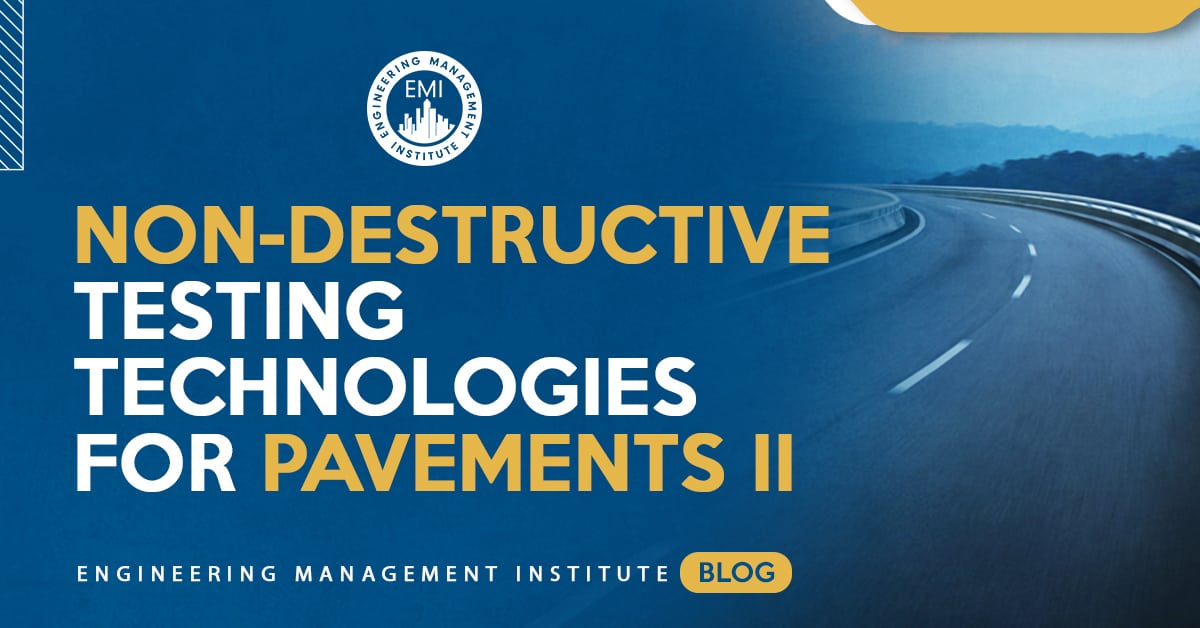This is a guest blog by Emil G. Bautista
In my previous article on non-destructive testing (NDT) technologies for pavements, I highlighted the importance of such technologies during and after the construction of highways. Engineers and technicians are relying more on non-destructive test (NDT) methods to evaluate the characteristics, quality, and performance of the materials used in constructing the different layers of the pavement system because it is a highly valuable technique that can save both money and time in pavement material and layers evaluation, troubleshooting, and research. Decisions related to pavement quality control and assurance are traditionally based on destructive sampling methods of limited coverage, such as coring, that represent significantly less than 1% of the in-service pavement.
Because NDT does not permanently alter the area being inspected, conducting the test is non-destructive in nature. This helps reduce any cost and time increase needed to evaluate in-situ materials due to an alteration of the materials or pavement layers tested, and, therefore, no correction of the possible damage caused is necessary to maintain the integrity of the designed pavement.
One of the non-destructive testing technologies being currently evaluated by several state DOTs is the density profiling system (DPS). Density profiling systems are emerging as a tool that can be used for continuous assessment of asphalt pavement compaction quality through measuring the pavement dielectric constant. The DPS investigates asphalt pavement compaction quality control and quality assurance by using instrumentation and sensors to collect information on the dielectric properties of pavement layers materials without causing damage. Dielectric constants, also known as relative dielectric permittivity, are measured on a scale of 1 to 81, where 1 is the dielectric constant for air through which radar waves travel most quickly, and 81 the constant for water.
The DPS measures the dielectric profile of pavements using ground penetrating radar (GPR) that can be related to in-place asphalt pavement density. By using GPR technology, the DPS can measure asphalt compaction quality continuously. The DPS system reports the asphalt surface dielectric constant, which is strongly correlated to asphalt air void content and which then can be used to estimate the density of a given sample or pavement area. As the dielectric constant decreases, air void content increases. Higher air void content in pavement is known to correspond to increased occurrences of pavement distress that negatively affect long-term performance and durability of asphalt pavement.
Since flexible pavements performance has been shown to be highly dependent on the air void content of the compacted mixture, the importance and value of having such a non-destructive method is that it can collect density information on a wide area and can also provide information on the mechanical behavior — and thus performance of the investigated pavement.
The advantage of this procedure is that it has the potential to reduce the required time and coring procedures used to assess the quality of a placed pavement while also improving the coverage of the data that is collected. It has been demonstrated that the analysis of the data generated can help identify regions where the compaction rollers underperformed and potentially indicate sections that may be problematic in the future. With the DPS, contractors can actively adjust their compaction techniques and determine whether there was a mistake that needs to be corrected or a decision that resulted in worse compaction by conducting sublot-by-sublot analysis.
For more information on the DPS, contact Kyle Hoegh, Ph.D., P.E., at [email protected]
About the Author:

I hope you enjoyed this week’s post by guest author Dr. Emil G. Bautista, PE. If you’re interested in your firm possibly joining the Civil Engineering Collective, please contact us here or call us at 800-920-4007.
I hope you’ll join us.
Anthony Fasano, P.E.
Engineering Management Institute
Author of Engineer Your Own Success







